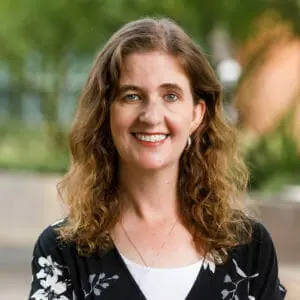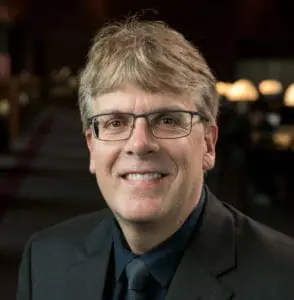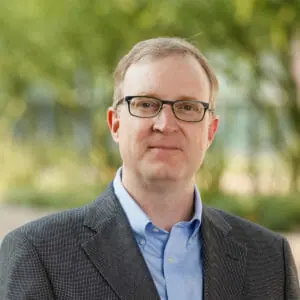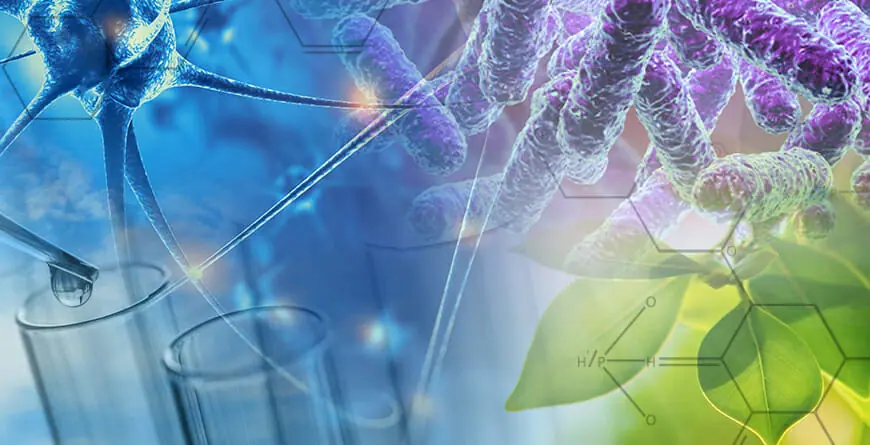
The Biodesign Institute at ASU significantly expands its scientific enterprise, announcing three new centers/labs to advance explorations in the fields of microbiomics, green chemistry and pioneering compact X-ray science.
With the new additions poised to begin operations, Biodesign continues its aggressive effort to probe exciting new domains, pursuing research to address human health, safeguard the environment, improve daily life and advance basic scientific understanding in diverse fields.
The two new centers are the Biodesign Center for Health Through Microbiomes (BCHTM), under the direction of Rosa Krajmalnik-Brown and the Biodesign Center for Sustainable Macromolecular Materials and Manufacturing (BCSM3) led by Timothy Long.
The Beus CXFEL Laboratory, the first facility of its kind centered around Biodesign’s new compact X-ray free electron laser, is directed by Robert Kaindl.
“Today, science is increasingly called upon to help meet the daunting challenges facing society,” says Joshua LaBaer, Biodesign’s Executive Director. “The Biodesign Institute is thrilled to welcome three scientists known for outstanding contributions to their field. Their research will further the Institute’s audacious efforts and advance the kind of interdisciplinary investigations Biodesign is specifically designed to nurture. The latest additions will bring the total number of research centers within Biodesign to 17 and significantly enhance our research synergy.”
Microbial universe within

The human body is teeming with non-human biological forms—vast ecosystems of bacteria, viruses, fungi, and other microbes scientists have only begun to probe. Collectively, they are known as the microbiome and their startling role in health and disease is finally coming to light.
Biodesign’s new Biodesign Center for Health Through Microbiomes, under the leadership of Krajmalnik-Brown will not only advance pathbreaking research into the subtle activities of microbial communities but further investigate potential microbial-based therapies for diseases including obesity, type 2 diabetes, altered drug metabolism, autism, depression, severe infections, irritable bowel syndrome, colon cancer, and a range of other afflictions.
The Center will explore microbial biomarkers that can pinpoint disease and guide appropriate treatment, while promoting improved health, through the monitoring and adjustment of the gut microbiome. The center will delve into new study areas while advancing Krajmalnik-Brown’s ongoing investigations into microbial diagnoses and therapies for obesity and autism spectrum disorder, formerly carried out within the Biodesign Swette Center for Environmental Biotechnology, where she was a faculty member for 13 years.
Ground-breaking studies have lately unveiled the complex microbial associations between the gut and human brain, with implications for the management of neurodegenerative diseases including Alzheimer’s and Parkinson’s—themes the new center will also explore.
In addition to her appointment at Biodesign, Krajmalnik-Brown also serves as a professor in the School of Sustainable Engineering and the Built Environment.
“I am really excited to lead the Biodesign Center for Health Through Microbiomes,” says Krajmalnik-Brown. “There are 100 times as many microbial genes in our bodies compared with genes from our human cells. The possibilities for harvesting these microbes’ metabolic activities and healing power are huge. This is a fast-growing field, and there is still so much we don’t know. The opportunity to transform health and help many people is immense.”

Krajmalnik-Brown is currently conducting clinical research focusing on the management of autism and gastrointestinal symptoms through microbiota transplant therapy, along with ASU Engineering colleague James Adams. Another active project involves the exploration of the microbiome’s contribution to energy balance and human metabolism. She has also contributed to the formation Autism Diagnostics, LLC, a commercial company focused on developing diagnostic tests for autism based on the observed profile of metabolism in patients.
The center plans to recruit new faculty with a broad range of relevant expertise, including in nutrition, bioinformatics, engineering and biochemistry and engage industry and clinical partners, while leveraging existing strengths in microbial ecology.
Another green world
Every year, some 600 billion pounds of plastics are produced, of which only a fraction are recycled. Although these materials have provided many benefits to society, over time they have accumulated in the environment, causing extensive contamination of air, earth and water. The problem has grown into one of the most profound ecological challenges facing humankind.
The Biodesign Center for Sustainable Macromolecular Materials and Manufacturing (BCSM3) promises to be one of the top ten centers of its kind in the world, dedicated to engineering sustainable solutions to the world’s plastics obsession through the development of green materials and the exploration of environmentally sustainable alternatives rooted in a molecules-to-manufacturing approach.
Petroleum-based polymers assume an almost endless variety of forms and are found in everything from synthetic fibers used in clothing, to latex paints, epoxy glues, Teflon® cookware and polyurethane cardiovascular devices. In addition to the search for more sustainable substitutes for common polymers, the center’s research is expected to advance biomedical devices, biodegradable polymers, greener synthetic methods, and pioneer the use of sustainable feedstocks.
The center will focus on the principles of green chemistry, using techniques including click chemistry for efficient functionalization, solvent-free polymerization processes, design of degradable polymers, additive manufacturing, and development of sustainable precursors for polymer production.
Advances in materials science will be investigated, including stimuli-responsive polymers, adhesives and elastomers using the techniques of block copolymers, high performance engineering polymers, controlled polymerization, and biomaterials with the aim of improving health and energy production and storage.
“The center will demand an unprecedented intensity of interdisciplinary partnership, asking molecular scientists and engineers to speak many different technical languages at the convergence of chemistry, biology, health sciences, and diverse engineering fields,” says Timothy Long, who will lead the new effort. “Our center will nucleate industrial partnerships and entrepreneurship to ensure a molecules-to-manufacturing paradigm both for educating the future workforce and innovating new technologies. We must sustain our passion for sustainability.”
Prior to his new appointment, director Long pursued a distinguished career at Virginia Tech, where he was professor of chemistry and director of the Macromolecules Innovation Institute. The new center will continue Long’s study of novel polymer materials for advanced manufacturing, bio-inspired thermoplastics and adhesive technologies, bio-derived polymers with biodegradation, making use of novel 3D printing techniques for reduction of waste and access to unprecedented geometries of printed objects. The recipient of numerous awards, Long received the 2019 Virginia Outstanding Faculty Award and was named an AAAS Fellow in 2016.
Long has published more than 320 peer-reviewed publications and has obtained over 60 patents based on his research discoveries. He is also deeply devoted to teaching and inspiring a new generation of young investigators working to pioneer sustainable solutions based on the latest advances in polymer science.
Long’s devotion to integrated research and teaching has earned him numerous awards, including the 2019 Outstanding Faculty Award in Virginia, Thermoplastic Elastomer Award from the American Chemical Society’s Rubber Division in 2018, and the Virginia Tech Alumni Award for Research Excellence 2010. In 2018, he was appointed the Editor-in-Chief of Polymer International and served as the President of the Adhesion Society.
Flash of light
Since the first X-ray image, a ghostly view of the bones of a hand produced by the German physicist Wilhelm Conrad Roentgen, X-ray radiation has had tremendous impact on science.
Though the ability to penetrate soft tissue and reveal skeletal bones may be their best-known characteristic, X-ray beams have been equally transformative in myriad other applications – particularly in the method of X-ray crystallography that has been essential to understanding atomic structure from the first discovery of human DNA up to modern structural analysis in chemistry, materials science, and drug development.
Yet conventional crystallography takes static pictures. Instead, full insight into the microscopic world requires an understanding of its dynamics, recognizing that many of the key processes underlying the function of biomolecules occur on unimaginably short time scales of femtoseconds – where one femtosecond corresponds to only a billionth of one millionth of a second.
This has motivated the recent development of X-ray free electron lasers (XFELs) to generate ultrashort X-ray pulses. So far only a handful of XFELs exist in the world, including the Linac Coherent Light Source at the Department of Energy’s SLAC National Accelerator Laboratory, and their design principles entail mile-long electron accelerators and up to billion-dollar price tags.
ASU Biodesign has taken on the pioneering task of developing a new generation of compact accelerator-based X-ray sources – which target a much smaller laboratory-sized footprint, dramatically lower costs, and improve levels of access for scientists.
Housed in a custom-designed space in Biodesign’s newly constructed Building C, these CXFEL labs comprise two instruments conceived by ASU faculty member and accelerator physicist Bill Graves. The first source – dubbed the compact X-ray light source (CXLS) – is currently nearing completion and will produce femtosecond X‑rays for time-resolved crystallography. A second-stage machine, designed in parallel, is slated to produce laser-like X-rays with full wave coherence and durations of less than a single femtosecond.
Robert Kaindl has been appointed to direct the CXFEL lab. Prior to joining ASU, Kaindl was a Principal Investigator in the Materials Sciences Division at Lawrence Berkeley National Laboratory. A leading expert in quantum materials and ultrafast science, Kaindl has focused on exploring condensed-matter phenomena on the shortest time scales including studies of superconductors and nanomaterials. His research involves the development and application of laser techniques across the spectrum of light, ranging from sub-millimeter wave terahertz radiation up to the X-ray regime.
“These are exciting times,” says Kaindl. “The development of compact ultrafast X-ray sources at ASU will position the university as a global leader in this forefront field. Peering into matter at its smallest dimensions in time and space lets us access some of the most important processes in nature – while realizing that physics, chemistry, and biology all converge on these scales. An on‑campus capability of this kind is truly unprecedented for a university. It will attract national and international collaborations while helping train a new generation of students.”
Kaindl received his Ph.D. in Physics from Humboldt University of Berlin, Germany in 2000 and was recently elected a 2019 Fellow of the American Physical Society. At Biodesign and as a professor in ASU’s physics department he will pursue new frontiers of light-driven materials phenomena using both tabletop time-resolved spectroscopies and ultrafast probes of electronic and lattice structural dynamics in quantum materials with CXFEL’s powerful X-ray pulses.
Among the core bioscience applications envisioned for the CXFEL Lab’s machines are static and time-resolved crystallography investigations by Petra Fromme’s group and colleagues in the Biodesign Center for Applied Structural Discovery. Ultimately this will enable scientists to produce movies of biomolecules in action, for instance permitting the visualization of drugs binding to receptors at the surface of cells. Such research is fueled by many national and international collaborations as highlighted by the NSF BioXFEL Science and Technology Center, a multi-institute consortium directed by ASU’s John Spence, which is dedicated to applying X-ray free electron lasers to investigations in structural biology.
The new additions position the Biodesign Institute and ASU at the forefront of exciting new developments in science and further diversify its impressive portfolio of leading-edge research.
